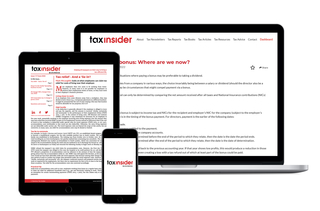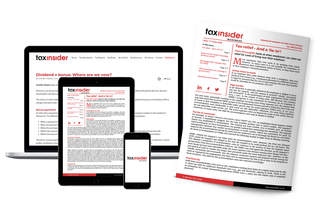New articles published
in December 2025
-
Private Use Costs: Are You Claiming Correctly?
Following the launch of HMRC’s digital campaign, now is a good time for unincorporated businesses and landlords to review how they apportion their expenditure to account for any private use.
Joe Brough provides a reminder of how and when a private use element should be calculated for the self-employed and property landlords.
-
Does Pre-Trading Count for BADR?
Business asset disposal relief (BADR) is a popular and useful capital gains tax (CGT) relief for individual business owners. It offers a CGT rate of 14% (for 2025/26) on chargeable gains from qualifying business disposals, subject to a lifetime limit of £1m (NB the BADR rate increases to 17% for disposals from 2026/27, thus reducing the value of the relief).
Mark McLaughlin looks at when preparing to carry on a trade can count towards a company’s two-year trading requirement for business asset disposal relief purposes.
-
Simple Assessment Letters: What They Mean for You
Simple assessment is used by HMRC to collect underpayment of tax from taxpayers with very straightforward tax affairs. Under simple assessment, HMRC sends a letter (the simple assessment) to the taxpayer telling them what they owe, instead of requiring the taxpayer to complete a self-assessment tax return.
Taxpayers who receive a simple assessment now have the option of paying their bill in instalments by setting up a ‘time to pay’ (TTP) arrangement if they are unable to pay what they owe in full by the due date.Sarah Bradford explains when a taxpayer may receive a simple assessment letter and when they can set up a ‘time to pay’ arrangement to pay in instalments.
-
IR35 Explained: Navigating the Off-Payroll Rules (Part 2)
Last month, I looked at the original IR35 regime. Broadly, its objective was to prevent avoidance of PAYE and National Insurance Contributions (NICs) by contractors and the like, where they provided their services through personal service companies (PSCs). The responsibility for determining whether the PSC’s engagement with the client or end-user lay with the PSC, its owner or the worker.
In the second of two articles, Peter Rayney explains how to navigate the IR35 and off-payroll working rules.
-
Q&As with Arthur Weller
Some of our most popular articles
-
Extracting profits from your personal or family company
A company is a separate legal entity, distinct from the shareholders that own it. Consequently, if the directors and shareholders want to use the profits made by the company for their personal use, they will need to extract those profits first. There are various ways in which this can be done; some are more tax-efficient than others.
Sarah Bradford considers options for extracting profits from a company in a tax-efficient manner in the 2024/25 tax year.
-
Is HMRC playing ‘dividend detective’?
HMRC recently undertook a ‘One to Many’ letter campaign, wherein HMRC’s skilled data analysts undertake to mine nuggets from a huge range of sources to test for omissions or errors in tax returns.
Lee Sharpe reports on HMRC getting all ‘Nancy Drew’ with its sleuthing over company reporting and shareholders’ dividend income returns.
-
A little known but generous CGT relief
Some company shareholders may either be unaware or have forgotten about a relatively unknown capital gains tax (CGT) relief that offers a reduced CGT rate of only 10% on qualifying gains of up to £10m during their lifetime, if certain conditions are satisfied.
Mark McLaughlin highlights a relatively unknown and infrequently used but generous capital gains tax relief.
-
Extraction point: Extracting profits on cessation
Owner-managers can spend a significant amount of time and energy building a successful and profitable trading company.
Joe Brough looks at tax issues for business taxpayers and their tax advisers when a company is coming to an end.
-
Q&As with Arthur Weller
Subscription Benefits
We asked our subscribers what they love about Business Tax Insider.
These are the top 7 reasons that they gave us:
Monthly Newsletter
Business Tax Insider…





